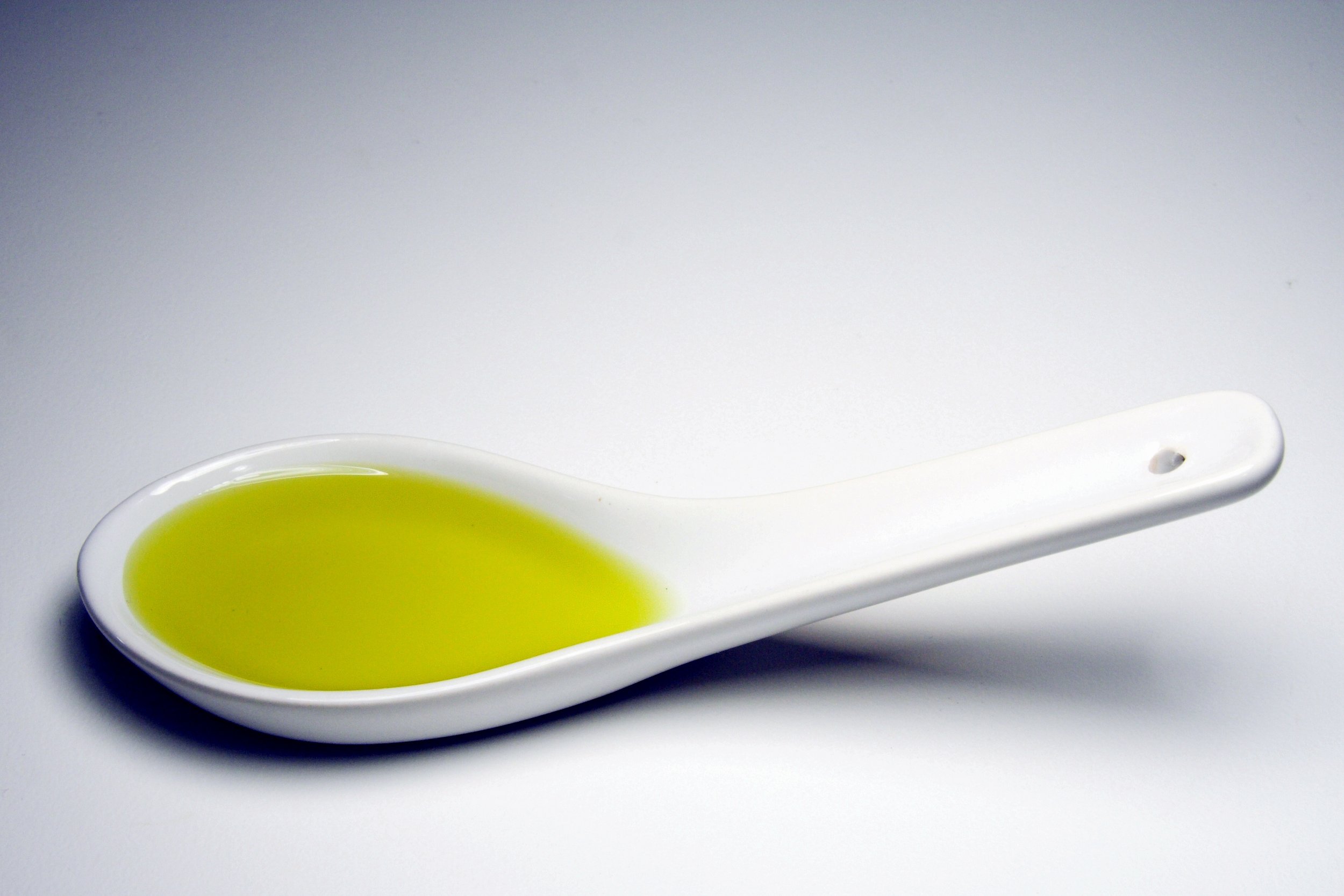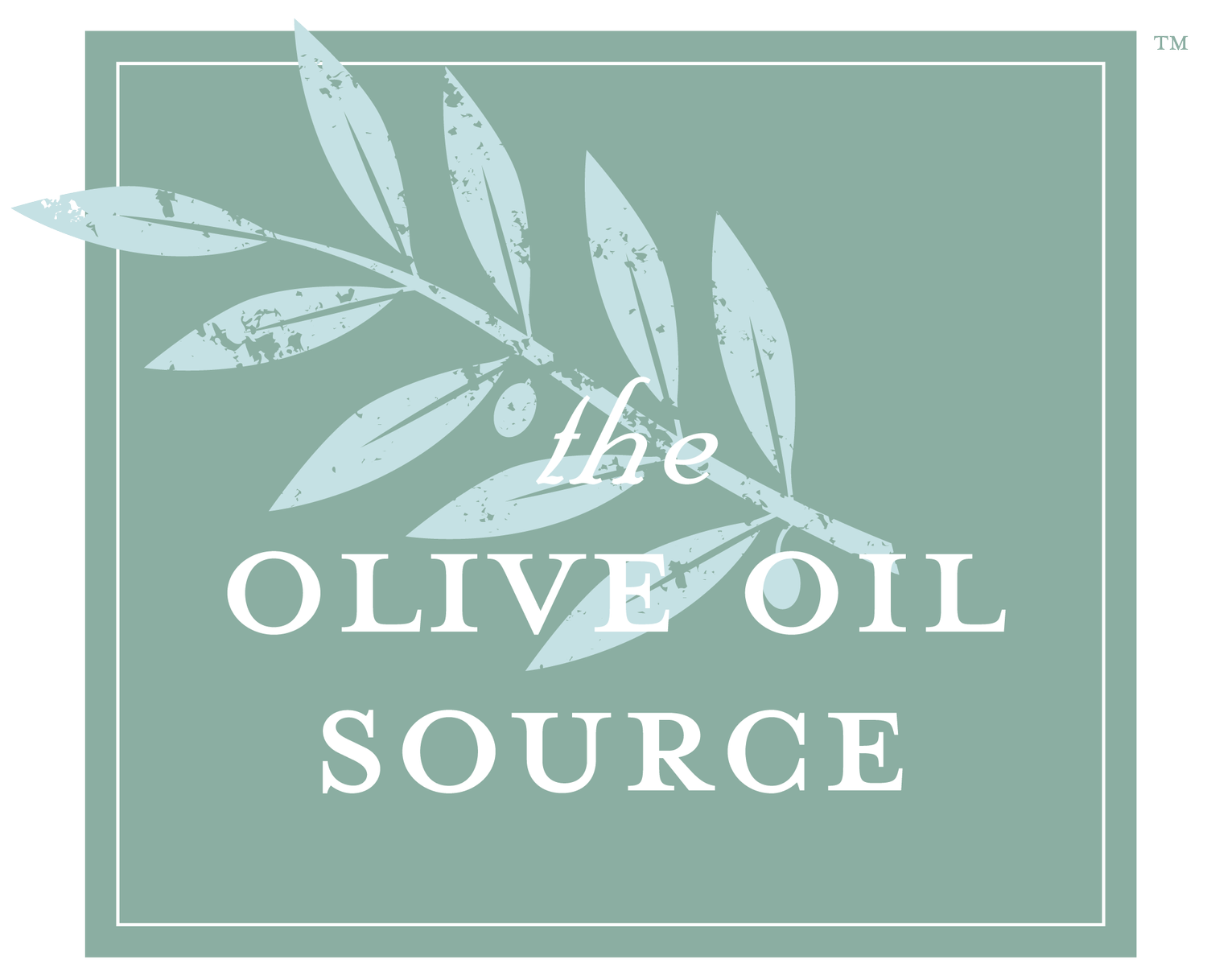
Flavor and Taste
The exact chemistry of olive oil flavor still puzzles researchers and a lot of research is being conducted on the subject. The few facts below barely scratch the surface! In some foods, some strong flavors are comprised of a single compound. For instance, the simple chemical cinnamaldehyde imparts a strong smell of cinnamon. It would be nice to identify a single chemical that could predict good or bad taste such as this in olive oil; we would have no need for tasters but could just do a simple test. Unfortunately, there are thousands of chemical compounds in olive oil and the interaction of hundreds of these probably contribute to flavor.
NATURALLY OCCURING AROMA COMPOUNDS IN EXTRA VIRGIN OLIVE OIL
The unique and delicate flavor of quality extra virgin olive oil is related to the presence of a large number of chemical compounds. Aldehydes, alcohols, esters, hydrocarbons, ketones, furans, and other compounds have been identified by gas chromatography and mass spectrometry in good-quality olive oil. Over one hundred such compounds have been identified which, as a whole, contribute to the distinctive organoleptic characteristics which make extra virgin olive oil so unique.
These tastes and fragrances derive from compounds like hexanal (green, grassy), trans-2-hexenal (green, bitter), and 1-hexanol and 3-methylbutan-1-ol, which are the major volatile compounds of olive oil. Many of these flavor compounds decompose if temperatures during milling are too high.
Phenolic compounds have a significant effect on olive oil flavor. There is a good correlation between aroma and flavor of olive oil and its polyphenol content. Hydroxytyrosol, tyrosol, caffeic acid, coumaric acid, and p-hydroxybenzoic acid influence mostly the sensory characteristics of olive oil. Various off-flavor compounds are formed by oxidation, which may be initiated in the olive fruit. Pentanal, hexanal, octanal, and nonanal are the major compounds formed in oxidized olive oil, but 2-pentenal and 2-heptenal are mainly responsible for the off-flavor.
We are often asked whether the component in olive oil that is peppery and sometimes makes people cough is oleic acid. It is not. Different olive oils with the same amount of oleic acid may be quite peppery or not all. Many studies have been done to try to predict a flavor profile based on the oil's chemistry. In "The Handbook of Olive Oil" by Harwood and Arapicio, they cite studies done by the authors that show that aglycons are responsible for the bitter and pungent sensory attribute, as well as tyrosol and possibly alpha-tocopherol. The phenols are related to astringent attributes. It is probably the combination of bitterness and astringency that causes a person to cough.
An interesting related fact: Gary Beauchamp and other chemists published a September 1, 2005 article in Nature that shows that oleocanthal, the pungent compound in some oils which creates a stinging sensation in the throat, has similar properties to anti-inflammatory compounds such as ibuprofen.
WHAT DETERMINES WHETHER THESE COMPOUNDS ARE PRESENT?
Many factors influence the presence of these compounds, in particular:
The care that went into growing, harvesting, and extracting the oil. If the olives are stored, and not milled promptly, volatile flavor components, such as aldehydes and esters, decrease. Various methods to increase the yield, such as heating the paste, also result in a loss of flavor compounds.
The storing conditions and the age of the oil. With age, the flavor and aroma of the oil decrease, especially if not stored in dark and cool conditions in a well sealed container.
The maturity of the olives at harvest time. The highest concentration of volatile components appears at the optimal maturity stage of fruit. The maturity of the fruit also affects the polyphenol content of the olive.
The variety of olives.
The weather such as the amount of rain, freezing conditions, or heat.
The location of the orchard. There can be significant changes in the flavor components in olive oil obtained from the same oil cultivar grown in different areas.
To find out more about the different tastes and aromas of olive oil, read our How To Taste section.
SOURCES
A.K. Kiritsakis: Flavor Components of Olive Oil -- A Review, Department of Food Technology, School of Food Technology and Nutrition, Technological Educational Institution (TEI) of Thessaloniki, Sindos Thessaloniki, Greece.
John Harwood and Ramón Aparicio: Handbook of Olive Oil, Analysis and Properties.
Journal of the American Oil Chemist Society 75, 673 681 (1998)
